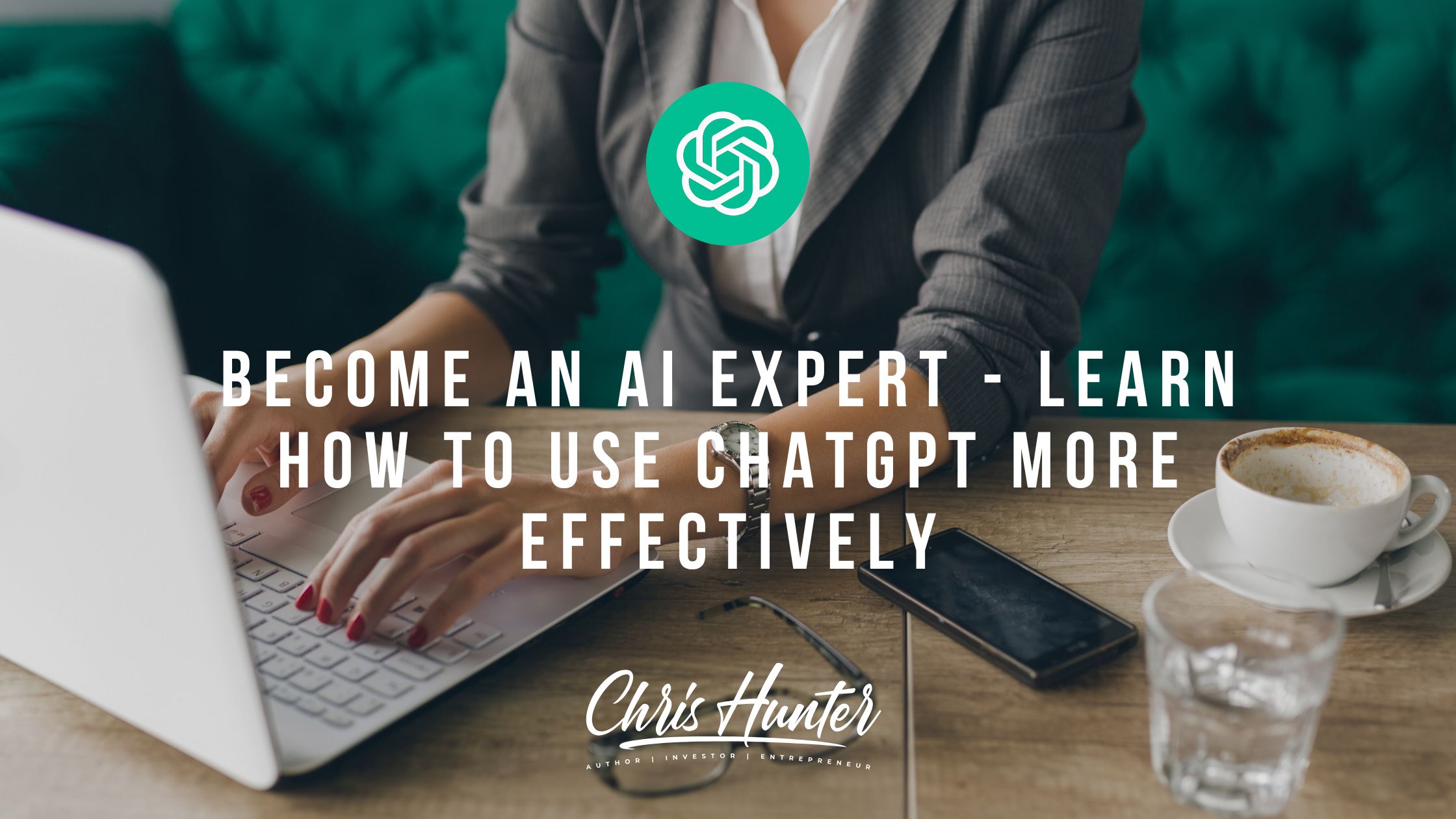by Chris Hunter
Share

In the ever-evolving landscape of technology and business, artificial intelligence (AI) has emerged as a game-changer, particularly for small business owners. With over 20 years of experience in the tech space and as the owner of a marketing agency that specializes in building AI solutions, I’ve seen firsthand how AI can streamline operations, enhance decision-making, and unlock new levels of efficiency. Among the various concepts and strategies emerging in the realm of AI, one that stands out is the 30% rule for AI. This principle suggests that AI can handle up to 30% of specific tasks or processes within a business, allowing owners to better allocate their time and resources.
But what does this mean for you as a busy small business owner? Simply put, understanding the 30% rule can help you identify which areas of your operations can benefit most from AI, ultimately leading to increased productivity and growth. In this article, we’ll delve deep into the 30% rule, exploring its implications, practical applications, and how you can leverage it to propel your business forward.
We’ll also discuss how integrating AI can be a game-changer in your marketing strategies, especially when it comes to enhancing customer engagement and retention. With the right AI tools, you can automate repetitive tasks, analyze customer data more effectively, and make informed decisions that align with your business goals.
As we navigate through this discussion, keep in mind that the goal is not just to adopt AI for the sake of it but to ensure that it aligns with your strategic objectives and enhances your business’s overall performance. So, let’s explore the 30% rule for AI and how it can revolutionize your operations.
Understanding the 30% Rule for AI
The 30% rule for AI is a guiding principle suggesting that up to 30% of a task can be automated through AI technologies without compromising quality or effectiveness. This principle serves as a benchmark for small business owners looking to integrate AI into their operations. The idea is to identify tasks that can be automated, allowing you to focus on strategic initiatives that require human insight and creativity.
For example, consider customer service interactions. AI chatbots can handle routine inquiries, such as FAQs or appointment scheduling, effectively managing up to 30% of customer service tasks. By automating these aspects, you free up your team to focus on complex customer issues that require a personal touch, thus enhancing overall customer satisfaction.
This rule can also apply to data analysis, marketing automation, and content generation. The key takeaway is to evaluate your business processes critically and determine where AI can take over without sacrificing the quality of your service or product.
Practical Applications of the 30% Rule
Streamlining Customer Interactions
One of the most immediate applications of the 30% rule is in customer interaction. AI-powered chatbots and virtual assistants can manage a significant portion of customer inquiries and support tasks. By implementing these tools, small business owners can ensure that customers receive immediate responses to basic queries, freeing up human resources for more complicated interactions that require empathy and nuanced understanding.
Enhancing Marketing Efforts
In the realm of marketing, AI can help automate tasks such as email campaigns, social media posting, and even content creation. For instance, AI algorithms can analyze customer behavior and preferences to optimize marketing strategies, ensuring that your messages reach the right audience at the right time. Utilizing AI for these tasks can save you time and increase the effectiveness of your campaigns, allowing you to focus on strategy and creative development.
Improving Operational Efficiency
AI can also play a critical role in improving operational efficiency. By automating administrative tasks such as invoicing, reporting, and scheduling, you can reduce the time spent on these repetitive activities. This not only enhances productivity but also minimizes the risk of human error. For small business owners, this could mean the difference between thriving and merely surviving in a competitive market.
Implementing AI within Your Business
Assessing Your Needs
Before diving into AI integration, it’s crucial to assess your business needs. Identify which tasks consume the most time and resources and evaluate whether they can be automated. This assessment will provide clarity on where the 30% rule applies and which areas will yield the highest return on investment when implementing AI solutions.
Choosing the Right Tools
Selecting the right AI tools and platforms is essential for success. Consider solutions that align with your business goals and can easily integrate with your existing systems. Many AI tools are designed specifically for small businesses, offering user-friendly interfaces and affordable pricing models.
Training Your Team
While AI can handle a significant portion of tasks, human oversight is still essential. Ensure that your team is adequately trained to work alongside AI tools. This includes understanding how to interpret AI-generated data, managing AI interactions with customers, and knowing when to step in for more complex issues.
Key Takeaways
- The 30% rule for AI suggests that up to 30% of specific tasks can be automated without compromising quality.
- Customer interactions can be streamlined using AI chatbots, allowing human resources to focus on complex issues.
- Marketing efforts can be enhanced through AI-driven data analysis and automation of campaigns.
- Operational efficiency improves significantly with AI managing repetitive tasks like invoicing and reporting.
- Assess your business needs to determine where AI can be most beneficial.
- Choose AI tools that integrate seamlessly with your current systems and train your team to use them effectively.
Conclusion
In conclusion, the 30% rule for AI offers a strategic framework for small business owners looking to leverage technology for growth and efficiency. By embracing AI within your operations, you can automate key tasks, improve customer interactions, and enhance your marketing efforts. The goal is not just to implement AI for the sake of innovation but to do so in a manner that aligns with your business objectives and enhances overall performance.
As you experiment with AI, remember that the journey is iterative. Monitor the results of your AI implementations, gather feedback from your team, and continuously refine your approach. With the right mindset and tools, you can harness the power of AI to propel your business forward, ensuring that you not only survive but thrive in today’s competitive landscape.
Frequently Asked Questions
What is the 30% rule for AI?
The 30% rule for AI suggests that up to 30% of certain tasks can be automated without losing quality or effectiveness.
How can AI improve customer service?
AI can manage routine inquiries and tasks through chatbots, allowing human agents to focus on more complex customer needs.
What tasks can I automate with AI?
Tasks such as customer interactions, marketing campaigns, data analysis, and administrative duties can often be automated.
How do I choose the right AI tools for my business?
Identify tools that align with your business goals and integrate smoothly with your existing systems.
Is AI expensive to implement?
There are various AI tools available at different price points, making it possible to find solutions that fit within a small business budget.
Will AI replace my employees?
AI is meant to augment human capabilities, not replace them. It can handle repetitive tasks, allowing employees to focus on more strategic work.
How can I train my team to work with AI?
Provide training sessions on the AI tools you implement, focusing on their features and how they can be leveraged effectively.
What are the risks of using AI in business?
Potential risks include data privacy concerns and reliance on AI for tasks that require human empathy and creativity.
Can AI help with marketing strategies?
Yes, AI can analyze customer data to optimize marketing efforts, ensuring messages reach the intended audience effectively.
How do I measure the success of AI implementation?
Track key performance indicators (KPIs) relevant to your automation goals, such as efficiency gains, customer satisfaction, and revenue growth.
STAY IN THE LOOP
Subscribe to our free newsletter.
Introduction In today’s fast-paced business environment, the integration of technology is no longer optional—it’s essential. As a small business owner, you may have heard of AI consultants but might not fully understand what they do or how they can revolutionize your business operations. With over 20 years of experience in the tech space and as
Introduction In today’s rapidly evolving digital landscape, artificial intelligence (AI) is no longer just a buzzword—it’s a game-changer for small business owners. With over 20 years of experience in the tech space and as the owner of a marketing agency that builds AI solutions, I understand the importance of leveraging technology to drive business success.
Introduction In today’s fast-paced business landscape, small business owners are constantly looking for ways to streamline operations and improve their bottom line. Enter the AI consultant—a pivotal ally in enhancing productivity and driving growth. With over 20 years of experience in the tech space and as the owner of a marketing agency that builds AI
Alright, roofing entrepreneurs, listen up! It’s time to take your roofing business to the next level with ChatGPT. This AI game-changer is set to revolutionize the way we do business, and if you’re ready to crush it in the roofing game, then you need to get on board. In this article, we’re going to dive









